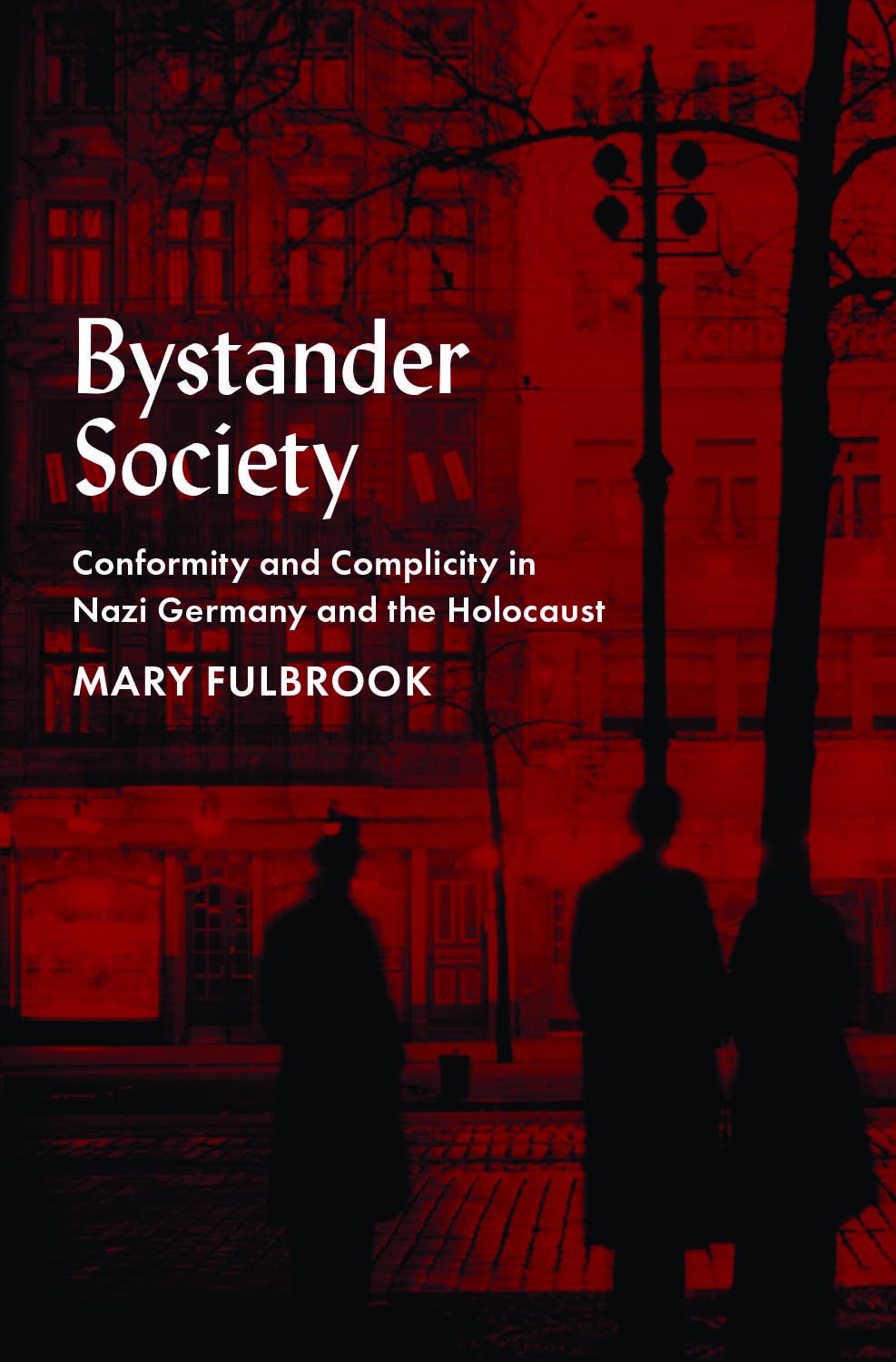Review of 'Bystander Society' by Mary Fulbrook

Review of Mary Fulbrook’s Bystander Society: Conformity and Complicity in Nazi Germany and the Holocaust (Oxford, Oxford University Press, 2023), The English Historical Review 140, Issue 602, February 2025, pp. 266–268.
In a political landscape where the stability of democracy seems once again to be embattled by the rise of far-right parties (sometimes self-proclaiming as insurgent ‘movements’ bearing a popular mandate for change), Mary Fulbrook’s exploration of how quickly the general population might condone – or at least cooperate with – the ultimately genocidal persecution of minorities under an authoritarian regime is both salutary and sobering.
While there are now many histories of Nazi Germany and the Holocaust which tell their story from the perspective of the persecuted, and Fulbrook’s narration incorporates all of the expected ‘beats’ – Hitler’s accession to power and the early antisemitic boycotts; the Civil Service Laws and Nuremberg Laws; “Kristallnacht” and the wartime progression towards all-out genocide – Bystander Society has something new and wholly original to offer.
Firstly, it uses a little-known collection of ego-documents, submitted for an essay competition in 1939-1940, to illuminate in detail the subtle yet increasingly detrimental ways in which Jewish Germans were gradually yet inexorably marginalised by their “Aryan” fellow-citizens, who formed increasingly segregated ‘communities of empathy and identification’ whilst simultaneously expressing sympathy for the victims’ plight – ‘enjoying both the benefits of public conformity and the moral glow of private dissidence’ (p. 118).
Fulbrook makes it abundantly clear that the question we should be asking of the majority of ‘ordinary’ non-Jewish Germans (whom she dubs the ‘muddled middle’) was not so much ‘What did they know?’, but rather ‘What did they make of what they knew?’, and how did they interpret or justify it (p. 311)? From the plethora of pre-war personal accounts explored in Chapters 1-8, it is evident that most “Aryan” Germans were wholly aware of the persecution and victimisation which was constantly worsening with every new piece of antisemitic legislation, and that many – even those in official party or government positions – would go so far as to express sympathy with the victims, or even boost their morale with small acts of kindness, whilst still acting in a way which enabled the persecution to continue unabated, ensuring their ongoing complicity.
Secondly, by shining a light on what exactly it might mean to be a ‘bystander’ in a society governed by a regime which is in no way ‘neutral’ or committed to ‘law and order’ in a democratic sense, but which instead possesses an absolute monopoly on state-sanctioned violence, creating systemic and structural imperatives to inflict marginalisation and brutalities on all minorities deemed ‘Other’, Fulbrook’s analysis takes us far beyond more simplistic definitions of the tripartite division between ‘bystanders’, ‘victims’, and ‘perpetrators’. She considers the complexities inherent in constantly calculating the risk associated with acting in solidarity with the persecuted or in any way contravening the regime’s dictates, and the ways in which feelings of helplessness might translate into impotence, repression, or indifference, and concern for oneself and one’s own family above all.
For many non-Jewish Germans, the increasing racialisation of society, and marginalisation of Jewish fellow-citizens and political outcasts, could lead to enormous potential for personal benefit and enrichment; even for those who merely wanted to make some accommodation with the demands of Nazism, a pernicious unconcern or callousness towards the fate of the demonised could easily take hold.
One anecdote shows with painful clarity how this tendency might play out in practice. Having been forced to fire two bemedalled Jewish doctors employed by the German national railway, depriving them of their profession and livelihood, civil servant F. Reuss describes what happened next – one of the doctors immediately shot himself in the ante-room to Reuss’ office, taking his own life, while Reuss’ ‘kindly, well-meaning, moustachioed colleague…, a member of the Association for the Protection of Animals [who] bred canaries [and] would hardly kill a fly without anaesthetising it first’ attempted to comfort him with the words: ‘“But Herr Councillor, how can you take this as such a tragedy. After all, it’s only an old Jew there who has shot himself.”’ (p. 96). This colleague did not realise the ultimate irony – that Reuss himself was partly of Jewish descent, and would soon lose his own job for precisely the same reason. Whether this man really believed that his speech and dismissal of the doctor’s suicide would bring his colleague some consolation, or whether he was merely acting an antisemitic part and felt conflicted, made no difference to either man’s outward enactment of conformist racism.
From this perspective, one of the most telling aspects of Fulbrook’s work is its ability to highlight the ways in which “Aryan” Germans began to perceive themselves differently, redefining their identities along racial lines, and altering their behaviour towards others accordingly. Taken to its extreme, this led in wartime to countless German soldiers internalising ideological rationales in order to provide justification for the most extreme and inhumane cruelties, including the ‘sport’ of tossing babies and infants into the firing-line during mass executions of Jewish civilians in Eastern Europe, executing head-shots as they ‘“flew in great arcs through the air […] before they fell into the pit or the water”’ (p. 325).
Although the book does not go out of its way to point out explicitly the ways in which its anatomisation of a ‘bystander society’ could be used amelioratively in the present – nor does it touch upon the ways in which the persecution and genocide which took place under Nazi rule also mirrored (and in some senses replicated) colonial logics of segregation and extermination which had long formed part and parcel of the mechanics of Western settler imperialism – its nuanced and perceptive analysis will make it essential reading on the history of the Third Reich and twentieth-century Europe for many years, or even decades, to come.
